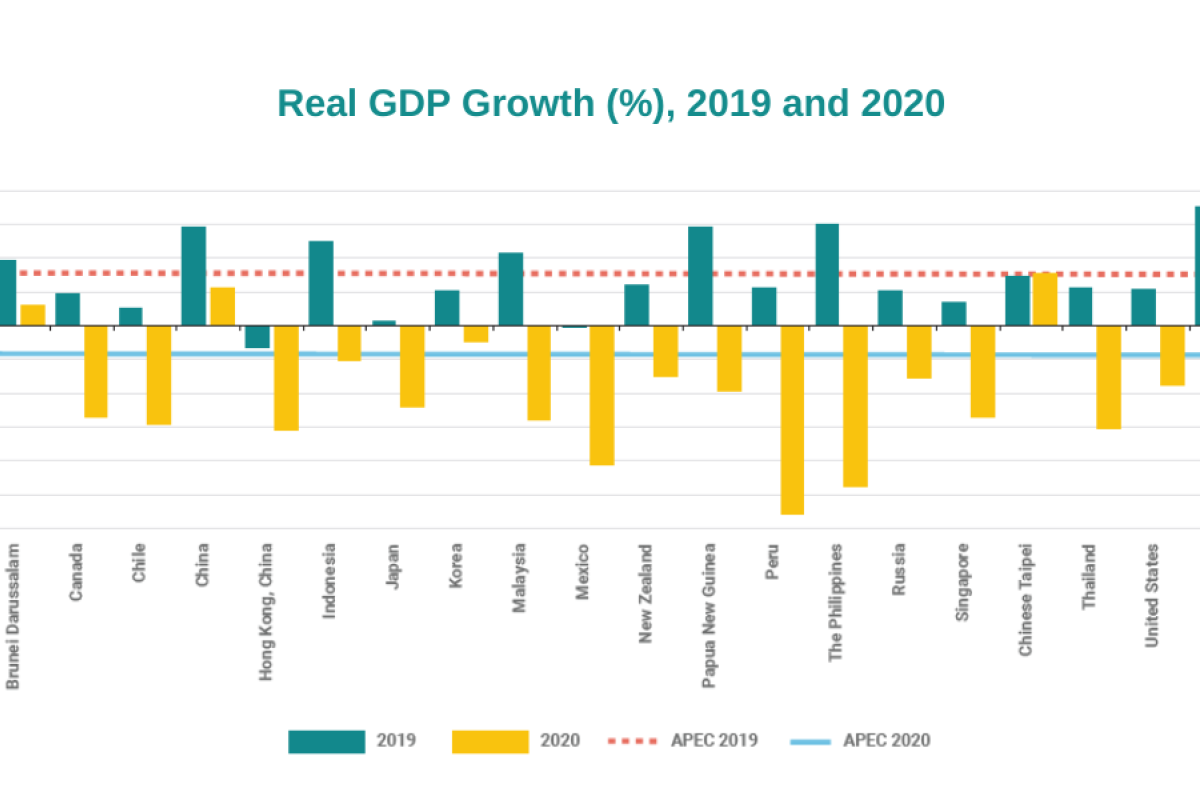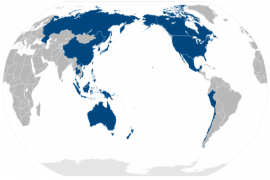This evaluation was conveyed in the recent APEC Regional Trends Analysis in a release issued by the APEC Policy Support Unit and received here on Thursday.
According to the analysis report, household consumption, which is APEC’s key growth driver, improved to -3.9 percent in the second half of 2020 on a year-on-year basis, as compared to -7.0 percent in the first half of last year.
Investment followed the same trend, recording a smaller decline of -6.1 percent in the second half of 2020 as compared to -10.5 percent in the first half.
The report notes that governments across the APEC region have learnt effective ways to manage the pandemic and people have learnt to adapt to novel ways of earning a living. It has resulted in a gradual reopening and resumption of economic activities that boosted consumption.
The region's economy is estimated to grow by 6.3 percent in 2021, with an expected strong increase in domestic and global activity, as pent-up demand is unleashed. The development and production of multiple vaccines also boost optimism for a more durable economic recovery.
"The worst fears from last year did not come to pass as we saw stronger economic rebound in the second half of last year, and this will likely continue throughout 2021," according to Director of the APEC Policy Support Unit Denis Hew.
"However, the region continues to face significant uncertainties, largely linked to how the pandemic is evolving, while job losses due to the pandemic and expectations of higher inflation this year could suppress consumer spending," Hew stated.
Weakness in investments, which is projected to extend to 2021, could also affect growth, according to the report.
"The start-stop economic reopening scenario as economies navigate through a resurgence of infections could hold back investment activity," Hew remarked.
The report also warns that uneven recovery in the region is largely related to differences in vaccine access and availability. Most APEC member economies can achieve widespread immunization by mid-2022 onwards, with some anticipated to do so earlier, by the end of 2021.
The disproportionate impact of the pandemic is also highlighted in the report. The pandemic affected everyone everywhere -- women, youngsters, the elderly, and the poor -- who experienced layers of negative impacts.
Most micro, small, and medium enterprises lack the capital and technological expertise to make their shift to online, translating into losses and closures and adding to rising livelihood fragility and poverty.
"People, with insufficient digital skills and equipment, or those living in areas where access to the internet is unreliable or expensive are denied the opportunity to reconnect, unable to continue their work and study," Rhea C. Hernando, a macroeconomist with the APEC Policy Support Unit, stated.
Unequal access to vaccines also aggravated the divergence in speed and strength of economic recovery in the region. Lower-income economies that rely largely on the COVID-19 Vaccines Global Access (COVAX) facility for their supply of vaccines are in for a longer battle, making the effort to economic recovery very fragile amid higher risk of virus resurgence.
"The pandemic has exposed the underlying gaps and inequality that have posed significant challenges to policymakers and societies," Hernando pointed out.
"We need to ensure that no one is left behind in our recovery journey by working together to contain the pandemic, implement structural reforms to boost human capital development, and protect the environment," she stressed. Related news: APEC sees softer contraction in 2020, uneven recovery in 2021-2022
Related news: APEC community is key to Asia-Pacific's growth: Suparmanto
EDITED BY INE
Reporter: Yuni Arisandy Sinaga
Editor: Suharto
Copyright © ANTARA 2021










